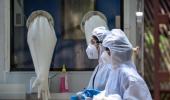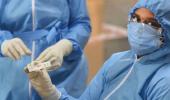'We are hoping the preparations we have made will not be needed.'
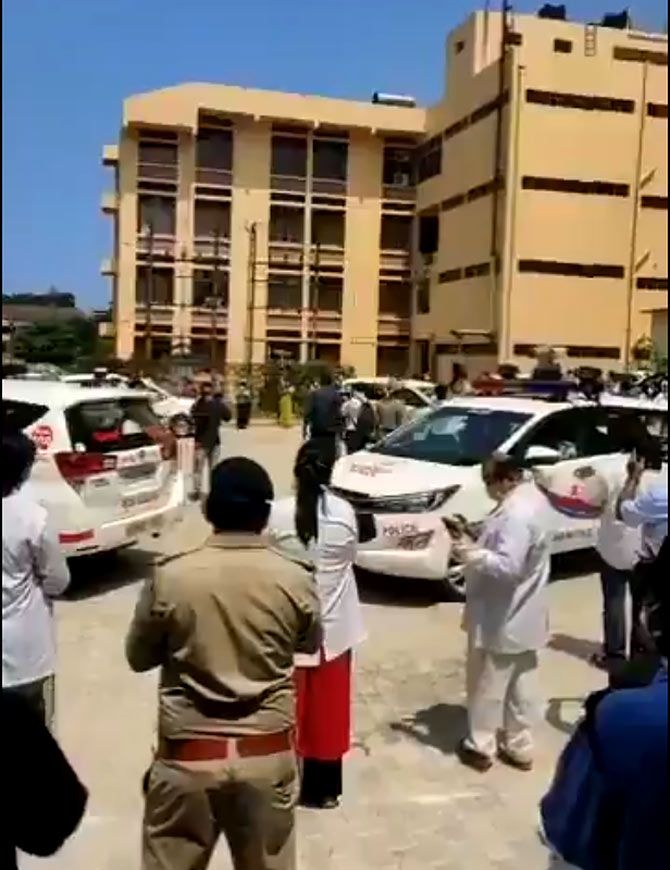
Dakshina Kannada district in Karnataka finds itself in the government's red zone for coronavirus cases.
This lush green district, which includes Mangaluru city, has been readying itself for the battle against coronavirus for some weeks now. The man leading the district's medical team is Dr John Thomas Ramapuram.
"Our biggest challenge is to ensure we have a proper plan in place. We have to be prepared for a large number of patients. Our biggest concern is that we should not run out of resources," Dr Ramapuram -- who is in charge of the infectious disease department and head of the department of medicine at the Kasturba Medical College, Mangaluru, tells Savera R Someshwar/Rediff.com.
As head of the COVID-19 medical task force in Dakshina Kannada district, what does your role involve?
While I do lead the medical side, I am just one member of the task force in Dakshina Kannada.
After many discussions with the district authorities, including the district commissioner and the heads of the zilla parishads, we put together a plan to handle each stage of the spread of this disease as the number of patients generally increases with each stage.
We vacated an entire hospital -- Wenlock (established in 1848, it is now run by the Kasturba Medical College, Mangaluru, as a teaching hospital), which is a government general hospital -- so that we could convert it exclusively for COVID-19 care.
To do so, we had to discharge around 300 TO 400 patients; most of them were accepted by private medical colleges nearby.
And since KMC (Kasturba Medical College) is looking after this hospital, we absorbed a major chunk as well.
What has made me really happy is that all the hospitals here have taken a share of what needs to be done.
One of my initial responsibilities was to ensure that Wenlock became a fully functional COVID-19 hospital.
In order to do so, the doctors needed to be trained; the staff needed to be trained. The hospital had to be reorganised. A lot of equipment had to be brought in.
So many pieces had to be put in place -- what you need to do for the staff, where our patients need to come, where the patients have to be admitted.
We held mock trials and, by April 6, we were fully equipped to admit patients.
Though we have had only a few patients till now, we are prepared in case the numbers go up.
If you had only a few patients, why has Dakshina Kannada been declared a red zone?
When we initially started testing, Bengaluru had the most number of cases in Karnataka. This was followed by Mangaluru (which is part of the Dakshina Kannada district).
Manguluru has an international airport and, in the initial days, we had a lot of passengers coming in from Dubai and other places. And, in those first few days, we had nine patients.
That is why we were declared a red zone.
After 14 days, if there are no new cases, Dakshina Kannada will become an orange zone.
Then, after another 14 days, if there are no new cases, it will become a green zone.
How many patients does Dakshina Kannada district have? What is the status of these patients?
Till the evening of April 18, we had 13 positive cases.
Except for one patient, who was diagnosed on April 17, all of them have been successfully treated and have gone home.
We also have a number of suspected cases. Approximately more than 100 to 150 people are suspected of being infected with the coronavirus.
How many beds and hospitals do you have ready?
Wenlock has over 700 beds.
If someone is suspected of having COVID-19, they will be admitted and tested.
If their report turns out to be negative, they are sent back home or to the original hospital
As a precautionary measure, we ask them to remain isolated for the next 14 days. They are monitored to ensure they do so.
Last week, we launched Dakshina Kannada's first COVID-19 testing lab at Wenlock so we get our reports in 24 hours.
Our lab gets about 300 to 400 samples a day. It caters to three districts -- Karwar, Udipi and Dakshina Kannada.
Earlier, we used to send our samples to Shimoga or Hassan.
What are the biggest challenges you are facing?
People fear this disease because they find it difficult to understand it. They don't want to accept that they may have it.
The reality is that this disease is going to be a threat to a lot of people in India over a period of time.
Our biggest challenge is to ensure we have a proper plan in place to manage it. We have to be prepared for a large number of patients.
Our biggest concern is that we should not run out of resources.
Mangaluru has seven medical colleges. We have joined together in the fight against the coronavirus.
We have agreed to share our staff, the healthcare workers and the technological machines, including ventilators.
At present, the number of patients we have is very less. But if that changes, we want to be ready for it.
At the same time, we are praying we do not fill those beds. We are hoping the preparations we have made will not be needed.
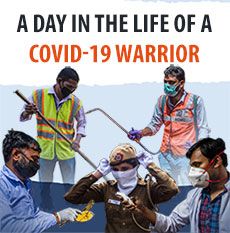
How different is Karnataka's handling of the crisis compared to other states?
I'm not an expert in that field; my knowledge is restricted to our area.
In Dakshina Kannada, the administration is very supportive.
They have not taken any unilateral decisions.
Everything -- what we need to do, what is the way forward -- is discussed.
No decision has been forced on us.
Is there any state government whose handling of the crisis has caught your eye?;
I would say Kerala.
They are way ahead.
They faced the Nipah virus attack in 2018 because of which they learnt a lot about how to handle such a crisis. They have standard operating procedures in place. They just needed to modify it for the present situation.
Also, when you have experience, you pick up things faster.
We had to begin from scratch so we were initially lagging, but I believe we are catching up now.
I would say, though, that Kerala has an edge over most of the other states in the country.
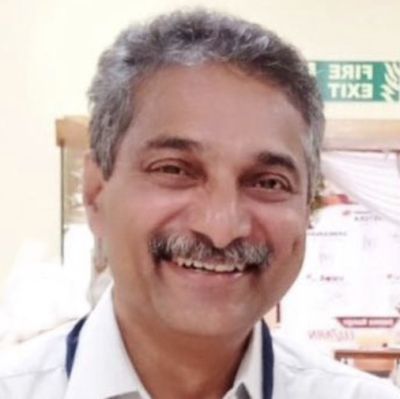
You had one of the youngest cases in India, where a 10 month old tested positive for the coronavirus. How different or challenging is it to treat infants who have contracted COVID-19?
In this case, the child was not suspected to have COVID-19.
The parents did not have any symptoms and tested negative.
The child became symptomatic only after a couple of days and the test showed a positive result.
It was a difficult time for the parents, doctors and the child, but, with the appropriate treatment, the child came out of it.
The child was treated in our neighbouring colleges in Mangaluru.
When a child is very young, they say the mortality and morbidity is quite high.
The medical team worked hard to get the child out of this situation.
A three-day-old boy contracted coronavirus in Mumbai. Is it possible for a pregnant mother to transfer the virus to her baby in the womb?
It is possible.
It is called vertical transmission (from the mother to the child) but we are yet to know how common this is in the case of this disease.
This is a new disease and there is a lot we have to learn about it.
The new knowledge we are receiving about it every day is mind-boggling; studies are being done; papers are be released.
Over a period of time, we will figure out why this is happening the way it is. For now, we need to have patience and wait.
Is the onset of summer a help in the fight against coronavirus, in your opinion?
There seem to be indications to that effect.
We have been treating the H1N1 (swine flu virus) for eight to 10 years now.
We have seen that it peaks during winter and the number of infections reduce in the summer.
I personally feel that, because of our climatic condition, we may not have as much of a problem as those countries where it is quite cold and the virus is likely to survive for a longer period.
In hot climatic conditions, the H1N1 virus dies a little faster. As a result, the number of people exposed to this virus also comes down.
Through there is no proof, it is reasonable to expect that the number of coronavirus cases will fall during the summer.


